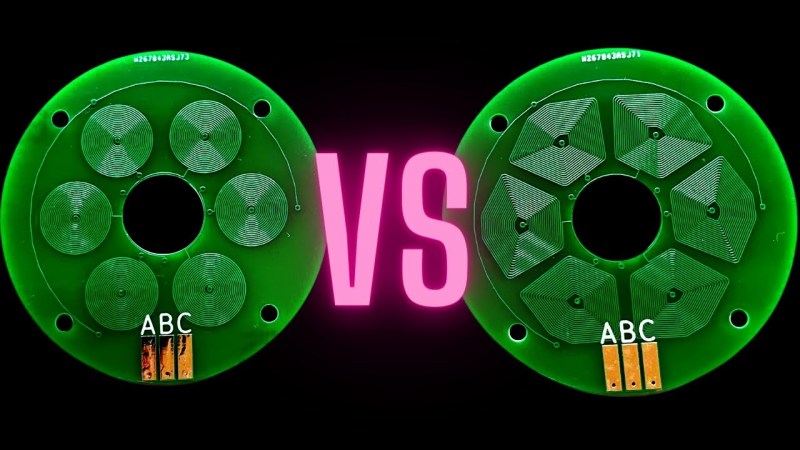PCB motors are useful things. With coils printed right on the board, you don’t need to worry about fussy winding jobs, and it’s possible to make very compact, self contained motors. [atomic14] has been doing some work in this area, and decided to explore why wedge coils perform better than round coils in PCB motor designs.
[atomic14]’s designs use four-layer PCBs which allow for more magnetic strength out of the coils made with traces. While they’ve tried a variety of designs, like most in this area, they used wedge-shaped coils to get the most torque out of their motors. As the video explains, the wedge layout allows a much greater packing efficiency, allowing the construction of coils with more turns in the same space. However, diving deeper, [atomic14] also uses Python code to simulate the field generated by the different-shaped coils. Most notably, it shows that the wedge design provides a significant increase in field strength in the relevant direction to make torque, which scales positively on motors with higher numbers of coils.
This kind of simulation and optimization is typical in industry. It’s great to see an explainer on real engineering methods on YouTube for everyone to enjoy. Video after the break.

















Can these be stacked on a single armature? Diminishing returns on track width?
Will probably even work better if you have PCB coils on both ends of the rotor.
Well, the force is the projection of the B field onto a normal to the traces. So, yeah. Look at it :-)
I don’t know much about motor design, but I assume also less flux leakage with wedge coils. Seems kind of basic.
The force is strong with this one
You’re using flat disc magnets. If you switch to cube magnets, you could turn them 90 degrees so that the magnet field is parallel to the PCB. You’d get a lot of force from doing that.
Magnetic fields want their magnetic field lines to be “closed”. This PCB motor designs seem not to do that, so parts of the magnetic field is lost in free space.
So i expect much better performance if you place some “soft magnetic” materials below the PCB and above the magnets, to tightly close the magnetic field lines. Ideally you want something with good magnetic properties, but high electric resistance, to avoid eddie currents. E.g. ferrites, sintered iron powder, stacks of sheetmetal, etc.
There’s an alternative wiring which maximizes the number of radial wires by having three overlapping phases running around in a gear-tooth pattern. It’s essentially a single coil that goes around the whole perimeter and instead of looping it just makes “teeth” along the way. Might be difficult to arrange on a PCB with vias though.
A little Ferrite core at the center of the coils would also help
Eg: a PCBflex on ferrite sticker available for NFC?
Prolly the only time that giving a wedgie actually improves performance